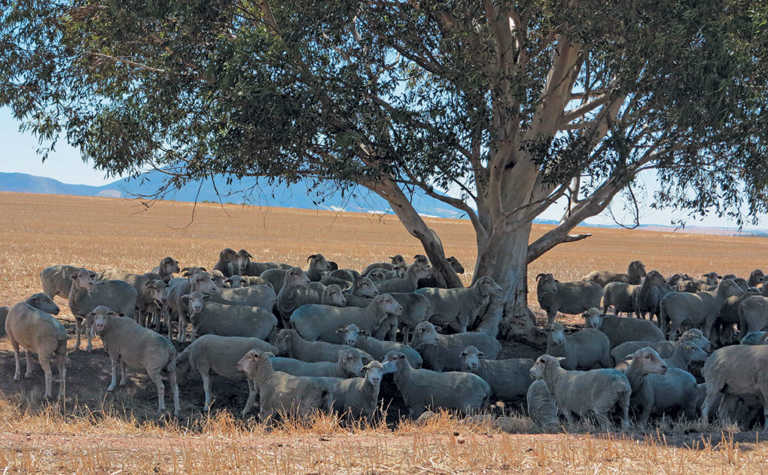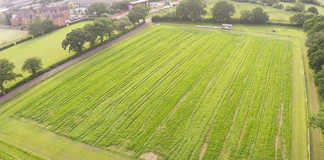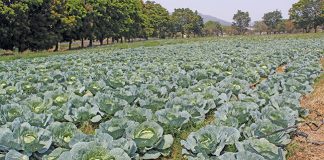
Bartholomeus Klip comprises three farms at the foot of the Elandskloof Mountains, between Wellington and Riebeek Kasteel in the Swartland. It spans 6 500ha in total, of which 4 000ha of fynbos reserve are set aside for conservation.
The remaining 2 500ha are used to farm cattle, sheep and crops. The entire farming operation runs with just 20 staff.
Diverse farming
Mike Gregor, managing director of Bartholomeus Klip for the past 32 years, explains that the fynbos reserve is stocked with game such as eland, bontebok, hartebeest, springbok, wildebeest, klipspringer and quagga.
“We also do some ranching in the conservation area: we breed and sell bontebok and eland. We host one of the core breeding herds of the Quagga Project.
“Then there’s the buffalo breeding project, which we’ve had for years. It has been very good to us, but prices have come down, so we’re looking at other ways of making it work.
“We currently have 57 buffalo and sell mainly heifers and young bulls on the local market.”
Bernard Wooding, the reserve manager, runs the buffalo on irrigated grazing and oversees the quagga and other conservation projects.
Mike stresses that conservation is important to Bartholomeus Klip, and explains their pragmatic approach: “The virgin veld is there because it’s not very productive, so why destroy it? Conservation also reminds us where we came from.”
The farm’s cattle component originally comprised about 150 Bonsmara, but these have been replaced by Wagyu bred from implanted embryos. The herd has also been registered as a stud.
Crops include 850ha of wheat, 150ha triticale, 200ha oats (mainly for hay), 40ha barley, 250ha medics and clover, and 120ha canola.
“For wheat production we use a seven-year rotation cycle that consists mainly of wheat, medics and canola. Wheat gets planted every second year and canola is planted once during the seven-year cycle. The medics gets established once every seven to nine years,” Mike explains.
The farm’s soil types are mainly Malmesbury shale and Klipheuwel gravel, but according to Mike, it’s difficult to know which soil type will perform best in a particular year. During the drought of 2017, the lighter soils performed better; in higher rainfall years, the heavier soils tend to excel.
In recent years, the rain has been arriving later and average temperatures are increasing. Whereas the average annual rainfall was 600mm along the mountain and 450mm on the western part of the farm, in 2017 just 285mm was recorded on the farm.
About 4 600 Merino, of which 2 000 are breeding ewes, are run on the farm. A stud has also been registered.
“Everyone wants Merinos at the moment, so that’s exciting for us. Our first production sale is in August next year,” says Mike.
He adds that diversity has worked for Bartholomeus Klip.
“The Swartland is a hard area to farm. There’s a tiny window to put in a crop, and nature is not always friendly. So you need to be doing many things. This means you’re happy if it rains, and also happy if it doesn’t!”
Multiple crops and Wagyu cattle
The Wagyu were introduced recently, with the first calves being born just 22 months ago.
The herd is already at 37.
“We switched to Wagyu because of the harsh conditions of the Swartland,” explains Wagyu manager Jonathan Honeyborne.
“Feeding cattle in summer is pricey, and we didn’t have the economy of scale. Wagyu gave us an opportunity to deliver more with less. From fewer animals we can produce more for the high-end niche market.”
According to Jonathan, embryo transfer was an efficient way to build up the herd as the farm already had a core herd of Bonsmaras.
“We brought in embryos from Australia and use the Bonsmaras as surrogate mothers to build our Wagyu herd. This is a popular method in South Africa. We’re focusing on bloodstock, so we’re building up a small core stud herd because there’s a market for bulls for commercial breeders.”
Jonathan is also assistant crop manager. The seven-strong cropping team also run the Wagyu herd.
“On the farm we require precise feeding, so it’s important to provide our own feed,” he explains. “This is a wheat area but we rotate with legumes for soil nitrification, and it doubles up as excellent grazing.”
He adds that sheep do well on medics and clovers due to their high protein levels.
The team plants canola to spread risk, and is also planting and baling more oats to meet demand due to the drought.
He adds that while wheat is the mainstay of the farm, high input costs due to the drought have made production difficult. Still, the past season’s yield was only slightly less than the long-term average.
Merinos for meat and wool
Merino manager Abraham Cloete was born on Bartholomeus Klip and has worked there for 33 years; his parents also worked on the farm.
“I started as a general worker in 1985,” he says. “In 1989, I went to Elsenburg agricultural college on a sheep management course as I was interested in sheep farming. About 10 years later, I took over the management of the sheep farming and every day I live my passion.”
Although Merinos have always been part of the farm, it was recently decided to change the breeding goals.
“We wanted to breed for meat as well because the returns are good, so we started buying bigger, smooth-bodied rams. We also started breeding for longer wool. When we began this process, our sheep averaged 55kg; now they average 70kg, which is a big difference.
“Then we made the decision to sell the lambs at four months, so adjusted our feeding and selected for growth. The team is now organised so that all the lambs are marketed by December.”
Abraham conducts artificial insemination (AI) on the ewes, and a scan ear-tag holds all the relevant data for the process.
“I do the AI on a trailer and then drive the ewes back to pasture so they don’t have to walk and there’s no stress on them after AI. It’s important to have a relationship with the animals and to communicate with them. The norm is 25% to 30% twins; one year we had 40% twins.”
For six weeks before the lambing, the ewes are given supplements, which are adjusted weekly. The lambs receive a high-protein mix. Most of the feed is from the farm, but oil cake and other supplements are bought in. Licks with trace elements are provided in the dry season.
Abraham is also meticulous with dosing. He conducts a random sampling every three months, checking the veins in the animals’ eyes for parasites.
2018If a sheep does not respond to treatment, it is removed from the farm as it may be a carrier. This strategy means the animals are dosed only two or three times a year, as opposed to the four or five times a year previously.
Working with his crew of four, and two sheep dogs, Abraham stresses the importance of teamwork.
“Everyone has a responsibility. I love shearing season. We shear every eight months, and have succeeded in breeding a balanced Merino with medium-grade long wool and a bigger build that’s suitable for the meat market too. We buy in rams from one of the oldest studs in the country. This year we also registered a Merino stud.”
Employee development
According to Mike, the demands for each sector change every year.
“At the moment, our big challenge is to increase carbon levels in the soil,” he says.
He adds that the employees respect each other and staff turnover is limited.
“The important thing is personal growth amongst staff. If a business isn’t growing, its stagnating and going backwards, and people feel this.”
He continually sets goals for employees, and looks for more diversification options that match the farm’s soil types and water allocations.
Email Mike Gregor at [email protected].











